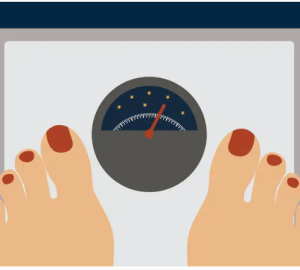Yoga Helps Induce Natural and Better Sleep; want to know how? Read on!
Yoga isn’t just beneficial for improving core strength, flexibility, and stress levels; it can also help you sleep better—especially if you suffer from insomnia. Yoga can improve physical strength and flexibility, improve breathing, reduce stress, and enhance mental focus. Regular yoga practice is known to cure several ailments, including insomnia or abnormal sleeping habits. It boosts relaxation and beats insomnia by soothing your mind and body before bed. Yoga helps unwind stress at the end of the day and get better sleep at night, it will calm and reset your entire body and mind to prepare you for ultimate relaxation.
Yoga Exercise – What Difference Does It Make?
When people who have insomnia perform yoga on a daily basis, they sleep for longer, fall asleep faster, and return to sleep more quickly if they wake up in the middle of the night. This is also true for older people who have insomnia —those who are 60 and older experience better sleep quality, sleep for longer and feel better during the day when they perform regular yoga.
This benefit can be seen in all sorts of situations where people have trouble sleeping. For example, pregnant women who start a mindful yoga practice in their second trimester sleep better and wake up less often throughout the night, and cancer patients sleep better if they do yoga (90 percent of cancer patients experience insomnia symptoms while receiving treatment).
Our Top 3 Yoga Poses for Sleep
If you want to include yoga postures into your bedtime routine, it’s important to do the right kind. Some types of yoga can be energizing (like hot yoga and vigorous vinyasa flow), which won’t help you relax as well as restorative styles of yoga postures like Hatha and Nidra. Here are three poses that are ideal for preparing your body for sleep.
- Legs Up the Wall:
Lie on the ground on your back and put the back of your legs up a wall (keep your legs straight), so your body is in an L-shaped pose. Relax into the position, hold it for at least 30 seconds and focus on your breathing.
- Lying Butterfly:
Lie on the ground on your back. Press the bottoms of your feet against each other and let your knees fall out to the sides. You can put a pillow under your knees if this feels too strenuous.
- Corpse Pose:
Lie on the ground on your back with legs straight, arms by sides, and palms facing up. Breathe slowly, focusing on your inhales and exhales.
Research reports have proven to show that yoga practice can help to alleviate sleep problems. For a natural, drug-free way to promote restful sleep, try yoga for sweet dreams.
Muscle Relaxation Is Possible with Yoga
It has been shown that people of all ages may benefit from yoga and that it can also aid enhance sleep. Everyone, from young children to senior citizens, may stand to profit from the myriad health and sleep advantages of yoga. It is probable that doing yoga on an occasional basis would enhance sleep quality more than not practicing yoga at all. On the other hand, frequent and long-term practitioners report an improvement in their quality of sleep. If getting a better night’s rest is one of your goals for using yoga as a technique, you should give some thought to developing a routine that includes regular yoga practice. This might be going to lessons on a weekly basis, setting up a certain period of time each day to practice at home, or doing a mix of the two.
Which Yoga Pose Is the Best?
There are many different styles of yoga, each of which may be beneficial to one’s health and wellbeing. Any kind of yoga may be practiced throughout the day, as long as the individual is able to do it in a comfortable manner. A smart way to get moderate to high levels of fitness is to try out some of the more physically demanding styles of yoga, such as vinyasa or hot yoga. When completed at least a few hours before going to bed, the activity in question has the potential to improve the quality of one’s sleep.








